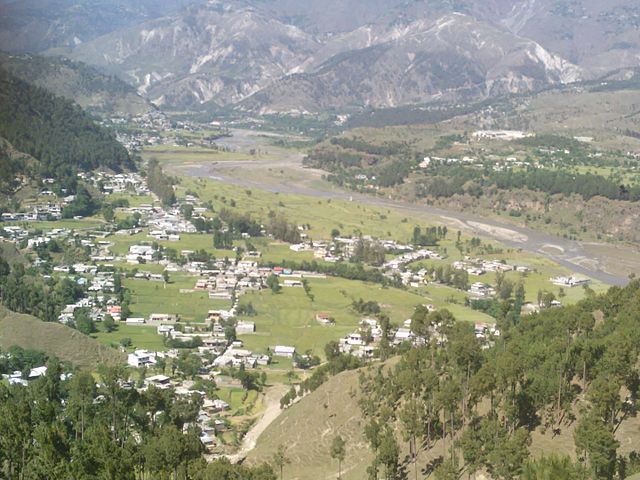When it comes to ideological tradition of Jihad and Jihadist, Balakot is an important place in history. Well, almost two centuries ago, the place was a launchpad for what is thought-out by scholars, historians and writers to be the first jihad of the modern period.

Image Courtesy: Faizanfarooq 995 [CC BY-SA 4.0 (https://creativecommons.org/licenses/by-sa/4.0)] via Wikimedia Commons
The History of Jihad
Begins from Balakot
Syed Ahmed Barelvi (1786-1831) an Indian Muslim revivalist wanted to establish an Islamic caliphate in the Indian sub-continent. This is the reason why he traveled across the then Indian subcontinent preaching the renewal of Islam and Jihad. He lead a movement that was political, military and religious. Next, he decided to wage a Jihad against the then rulers of our land who weren’t followers of Islam.
His first target was the ruler of the expanding Sikh Empire Maharaja Ranjit Singh whose empire was further escalating in the Muslim territory in Afghanistan. He wanted to establish an Islamic state in the north west frontier in the Peshawar valley. With complete confidence Barelvi moved towards his mission starting 1826 to wage jihad against Maharaja Ranjith Singh, who ruled what is the NWFP in Pakistan today. This is the first recorded jihad stirred by the fanatical Sunni-Wahabi Islamic ideology.
Aided by citizens in the neighbourhood i.e. Afghanistan, Syed Barelvi Ahmed believed that the Muslims in the area would support his mission of establishing an Islamic state by fighting against the Sikh ruler. In 1831, he reached Balakot, formed an army of Mujahideen forces and hoped to defeat Maharaja Ranjit Singh so that he could move into Kashmir. However, the Sikhs got to know about the plan and their army started marching towards Barelvi’s men.
According to some accounts, the Sikh army led by commander Sher Singh camped on Balakot’s hill top. Barelvi wanted to play the waiting game and even laid a trap for the Sikh army. The Islamic fundamentalists flooded the paddy fields with water making it marshy so that the Sikh army would get stuck in it. However, the trap became fatal to Barelvi’s men as the entire troop got stuck in their own plot. The Sikh army eventually trounced the Mujhahideen and killed about 13,000 of them. Barelvi whose dream was to seize Kashmir and establish the Islamic caliphate was caught and beheaded.
Not just Syed Ahmed Barelvi, the battle at Balakot in 1831 also witnessed the death of Shah Ismail Saeed. Saeed comes from a family that was influenced by Sheikh Sirhindi – the religious fanatic who killed the 5th Sikh Guru Arjun Dev.
Avenging
the Defeat of Balakot
In July 1989 on his return to Kashmir valley after an 11 month stay in Pakistan, Azam Inquilabi floated Operation Balakot (OP-BKT), the militant wing of the Mahaj-E-Azadi (MEA), which was founded in 1977 by Sofi Mohammed Akbar. A document circulated by Inquilabi espoused the concept of Independent Kashmir and even welcomed material as well as moral support from Pakistan. The document also said that in case of military threat from India or China, the independent Kashmir would enter into a confederation with Pakistan, Afghanistan and Iran for self -defence. However, nothing much came out of this group. Azam Inquilabi was the first chief of United Jehadi Council. He however denounced militancy in 1994.
For Jihadist, Balakot holds a historical value. No wonder, the chief of JEM Maulana Massod Azhar who sees Barelvi as his hero feels an emotional connect with Balakot – the historic place where the first Jihad inspired by Wahabi Sunni ideology took place. After all, Jaish-e-Mohammed’s main objective is to ‘liberate’ Kashmir from Indian control and assimilate the state within Pakistan. This is why JeM training facilities in Afghanistan were re-located to Balakot and even before the air strikes have had important training centers of the JEM and other terror groups. The Indian air strike in Balakot that killed jihadis for fidayeen action must therefore be a huge psychological blow for the entire fraternity of Jihadist as the place holds a symbolic value to all those Jihadist Ideologues.
Source and References:
- Islam and Resistance in Afghanistan, Olivier Roy
- Jihadis in Jammu and Kashmir: A Potrait Gallery, K. Santhanam
- IPCS Special Report, Rohit Honawar

